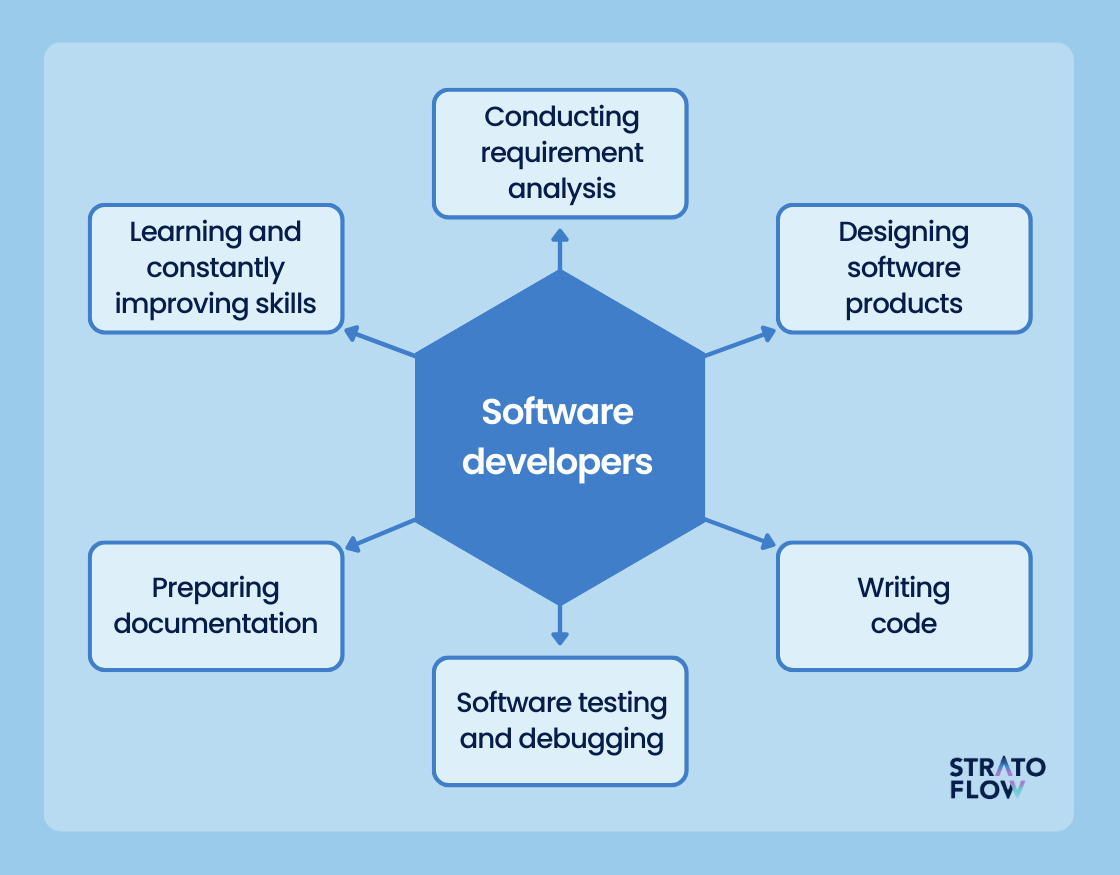Hire Dedicated Developers to Increase Your Software Development Timeline
Hire Dedicated Developers to Increase Your Software Development Timeline
Blog Article
Committed Developers vs. In-House Teams: Which Is Right for You?
The decision between utilizing devoted developers and keeping an internal team is a significant one that can influence the trajectory of your projects and overall organization method. Committed designers give a level of flexibility and customized expertise that can be useful for particular, short-term initiatives. Conversely, internal teams add to a natural business culture and a nuanced understanding of long-lasting objectives. By examining vital elements such as budget, project extent, and preferred control, you can better determine which technique lines up with your business requirements. Nonetheless, the ramifications of this selection expand past immediate results-- think about the more comprehensive impact on your service landscape.
Understanding Dedicated Programmers
The growing need for specialized skills in the technology sector has actually resulted in the development of specialized programmers as a practical option for lots of companies. These experts are normally acquired on a project basis, permitting companies to take advantage of certain knowledge without the long-lasting commitment related to permanent hires. Devoted designers are typically embedded within a client's group, offering versatility and scalability to meet task requirements.
This version permits organizations to access a worldwide talent swimming pool, which is especially helpful in a quickly evolving technological landscape. Committed programmers can be sourced from numerous geographical areas, guaranteeing that firms can discover the ideal skill set at competitive prices. They typically bring a wealth of experience and expertise, having worked with diverse projects throughout various industries.
Additionally, specialized developers can concentrate solely on the tasks handy, enhancing performance and performance. They are furnished to integrate seamlessly into existing workflows, collaborating closely with in-house teams to achieve task objectives. This technique not only minimizes the concern of recruitment and training yet also permits organizations to remain active, adjusting promptly to changing market demands and technical advancements.
Benefits of In-House Teams

Furthermore, in-house groups have a tendency to have a deeper understanding of the company's mission, worths, and goals. This positioning can improve employee involvement and inspiration, as employee really feel much more linked to their job and the organization's success. In addition, having a committed internal team permits far better alignment of techniques and goals, as these members are consistently concentrated on the firm's top priorities.
In-house groups additionally promote quicker decision-making procedures, as they can react a lot more rapidly to adjustments and challenges. The well-known partnerships and knowledge with firm methods enable for structured process and lowered miscommunication. Eventually, the combination of a natural culture, positioning with organizational goals, and efficient interaction makes in-house groups a beneficial possession for numerous organizations, specifically those aiming to grow long-term growth and innovation.
Price Considerations
When examining price factors to consider, both internal teams and specialized developers present distinct economic ramifications for organizations. Involving committed designers usually involves a pay-per-project or per hour price version, which can be cost-efficient for organizations with changing project needs. This technique allows for adaptability in scaling resources up or down, making sure that business only pay for the solutions they need.
In contrast, internal groups require dealt with prices, consisting of incomes, advantages, and overhead costs such as office and equipment. While this model supplies greater control and prompt schedule of sources, it may lead to higher long-term expenditures, specifically if the work does not warrant a full time personnel.
Furthermore, business should take into consideration the surprise prices connected with recruitment and training of in-house workers, which can additionally strain budget plans. In many cases, the moment and sources invested in taking care of an internal team can take away from the company's core business goals.

Job Administration and Versatility
Task management and versatility are important aspects that affect the choice in between dedicated designers and in-house groups. Dedicated programmers generally supply a high level of versatility, allowing companies to range sources up or down based upon task needs. This agility can be specifically beneficial for companies experiencing varying workloads or those looking for to innovate rapidly. Dedicated groups frequently have actually established procedures for this content managing projects successfully, leveraging certain methodologies like Agile or Scrum, which promote iterative progress and versatility.

Eventually, the selection between internal groups and dedicated designers depends upon the wanted degree of adaptability and the details project management requirements. Business need to evaluate their functional dynamics, job intricacy, and resource accessibility to determine which option aligns best with their strategic purposes.
Making the Right Choice
Picking the right development approach-- committed programmers or internal teams-- requires a cautious assessment of numerous aspects that line up with a business's calculated objectives. software development partner. Initially, think about the nature of the project. If it requires specialized abilities or a quick scale-up, devoted designers may be preferable. Alternatively, in-house teams can offer much better continuity and integration with existing workers.
Next, assess your budget. Dedicated designers typically present a cost-effective service for temporary tasks, while in-house groups might incur higher long-lasting expenses as a result of incomes, benefits, and overhead expenses. Examine the degree of control and partnership desired; in-house groups usually cultivate more powerful interaction and alignment with firm society.
Additionally, consider the moment structure. If prompt outcomes are necessary, devoted designers can be onboarded quickly, whereas constructing an in-house team requires time for recruitment and training. Finally, consider the long-term vision of your company. If continual growth is essential, spending in an internal team might produce far better returns with time. Eventually, the choice depends upon a comprehensive evaluation of these elements, making sure positioning with your company's functional requirements and total purposes.
Final Thought
In conclusion, the decision in between in-house teams and devoted designers pivots on project needs and business purposes. Alternatively, internal teams grow a natural culture and much deeper alignment with long-term objectives.
The decision in between using specialized programmers and preserving an internal team is a significant one that can Source impact the trajectory of your jobs and general service strategy.Project monitoring and versatility are important variables that affect the selection between internal teams and dedicated designers. software development partner.In contrast, internal groups might stand out in preserving a consistent task monitoring structure due to their familiarity with the company's culture and long-term goals. Dedicated developers often present a cost-efficient option for short-term projects, while internal groups might sustain higher long-term expenditures due to salaries, benefits, and expenses expenses.In verdict, the decision between in-house groups and specialized designers pivots on job demands and organizational purposes
Report this page